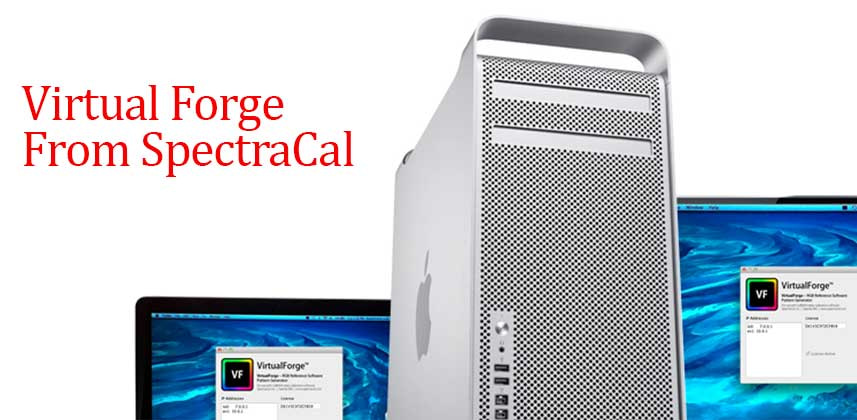
SpectraCal VirtualForge
Robbie Carman
This is where a signal or pattern generator comes in. Traditionally, the pattern generator would be hooked up with the calibration probe, and a computer running calibration software. The software would “talk” to the probe (also called a meter) and the signal or pattern generator. For example, the software would request a pure 100% red pattern – the signal generator would produce that and then the probe would take a reading. Once the reading was done, the software would request the next pattern and so on. The entire time the software would be recording calibration readings. This type of calibration is known as a “closed loop” calibration where the software, signal generator and meter are all talking to each other and can then upload calibration data to a monitor automatically. The beauty of this type of calibration is that you can essentially “set it and forget it” making for straight forward easy calibrations.
The folks at SpectrCal have come out with a product called Virtual Forge that allows you to use a software app downloaded to your Mac and a supported hardware device like those from AJA (BMD support coming) to generate calibration patterns to a monitor connected via HDMI or HD-SDI. The cool part is that Calman (SpectraCal’s calibration software) can then from another computer (currently a Windows machine) “talk” to the pattern generator via a wired or wireless network – essentially allowing Calman to control the Mac for purposes of calibration and generating any necessary patterns for a successful calibration. In some cases Calman generated calibration data can even be uploaded directly to a supported monitor, or LUT box.
We’re really excited about Virtual Forge. At $395 software only (thru the end of July then $495) and also available with an AJA T-Tap Thunderbolt interface for $695 you can get a professional signal generator for literally a fraction of the price of traditional hardware unit.
Comments
2 thoughts on “SpectraCal VirtualForge”
Leave a Reply
You must be logged in to post a comment.


What is the future of this coming to PC? I am already a PC user and with Apple seemingly taking a nose dive (soldered in RAM in the macbooks and the new joke of a MacPro) I, currently, do not see any Apple products in my future.
This is not a PC fanboy statement as I have worked with both platforms, but, due to mostly software availability reasons and cost, I prefer PC and would love to see something like this for my studio.
Hey Ross – I hear ya man! Sorry for the late reply I was taking some much needed vacation. Right now Virtual Forge is just on the Mac but since Calman of course runs on the PC I can’t see it that hard for them to make it work on a PC as well. The only thing is I think they’re really banking on Thunderbolt i.e. T-Taps and MiniMonitors and right now TB on Windows laptops is not that common.